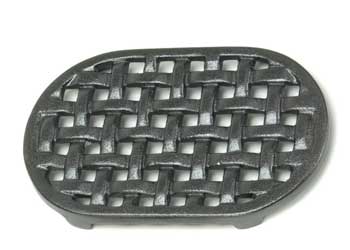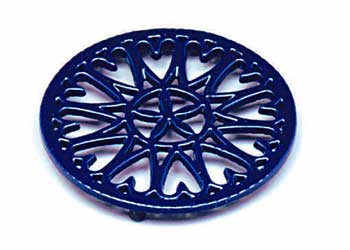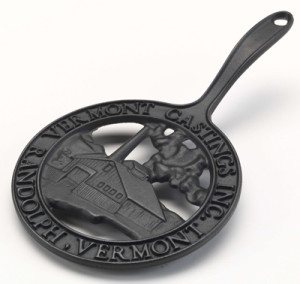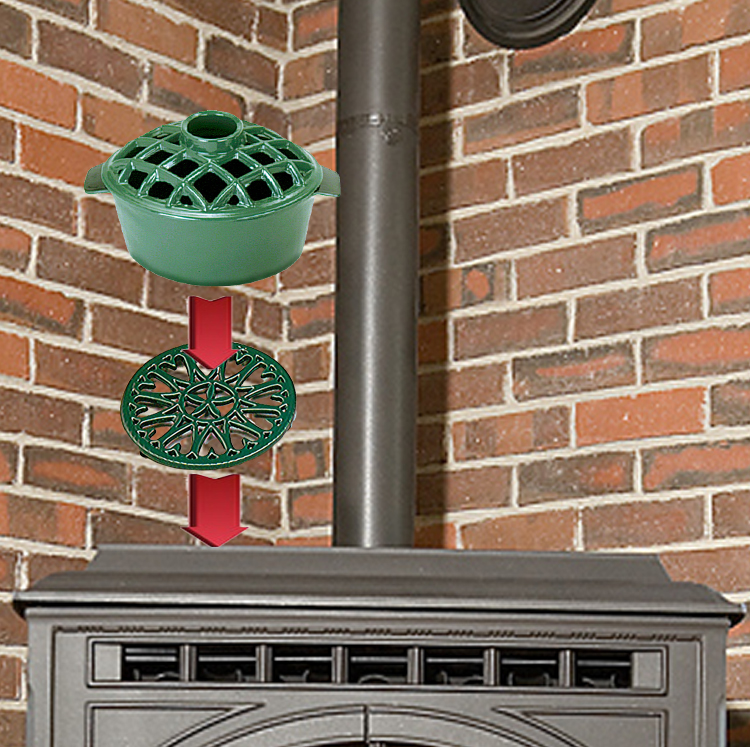Using a Wood stove Trivet
Cooking on your wood stove can be very satisfying. Dishes that need to simmer for a long time can cook on the wood stove, freeing the kitchen range for other projects. It’s also nice to keep a tea kettle on the stove so that water is already to make tea. When there’s a power outage, you can still cook dinner if you learn to cook on your wood stove. Cast iron frying pans and dutch ovens work best for cooking on your wood stove.
You’ll need a wood stove trivet to regulate the level of heat under a cooking pot and reduce the likelihood of a wood stove kettle or steamer boiling dry.
 |
 |
 |
The word ‘trivet’ is derived from the Latin word for tripod; hence most trivets have three legs. Wood stove trivets, however, are typically round or oval discs that sit flat on top of the wood stove. That’s because the tips of legs might scratch the top of your wood stove.
Wood stove trivets are cast iron, generally with a porcelain coating, or are wrought iron filigree work. They store and conduct heat quite readily, so we really can’t recommend using them on the wooden dining room table.
Because wood stove trivets, steamers, and kettles all come in a variety of enamel colors, you can match your wood stove trivet with the steamer or kettle you use with it.
Wood stove trivets are a handy accessory to your wood stove. If your steamer or kettle is boiling too fast, put a trivet under it to reduce the heat. If you want to simmer a yummy stew, put a wood stove trivet under your dutch oven, making the dutch oven a slow cooker.
Old Trivets
Old trivets were made of bronze or brass. Nineteenth century trivets were typically made of cast iron.
Trivets designed to be used in fires or in fireplaces typically had tall legs. Some had handles to make it easier to retrieve them from the fires. When Benjamin Franklin invented the first wood stove in 1742, trivets that had once been used in fireplaces quickly made their way to use on wood stoves.
